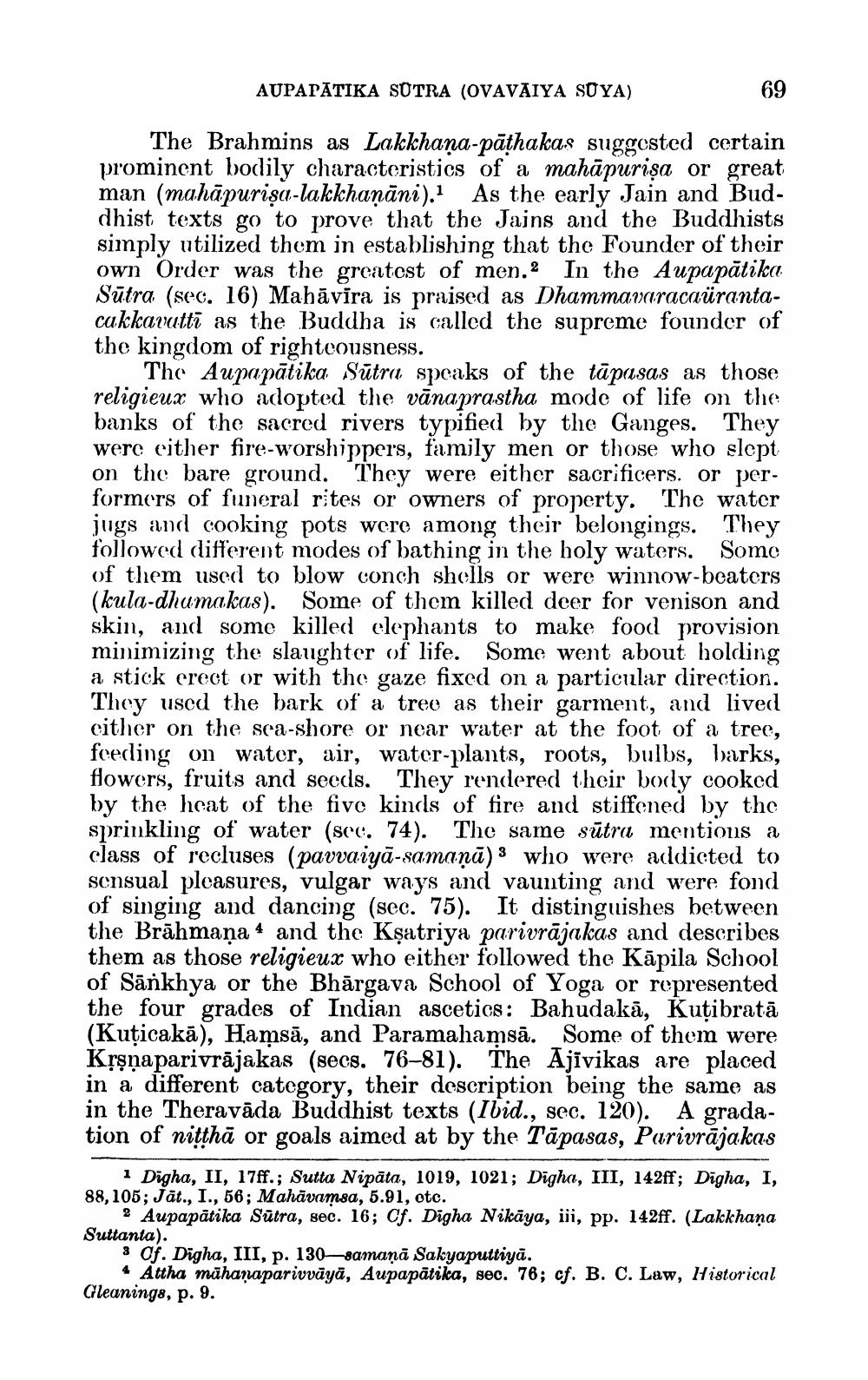________________
AUPAPĀTIKA SUTRA (OVAVAIYA SUYA)
69
The Brahmins as Lakkhana-pathakas suggested certain prominent bodily characteristics of a mahāpurisa or great man (mahāpurisa-lakkhanāni). As the early Jain and Buddhist texts go to prove that the Jains and the Buddhists simply utilized them in establishing that the Founder of their own Order was the greatest of men.2 In the Aupapātika Sūtra (sec. 16) Mahāvīra is praised as Dhammavaracaürantacakkavuttī as the Buddha is called the supreme founder of the kingdom of righteousness.
The Aupapātika Sūtra speaks of the tāpasas as those religieux who adopted the vānaprastha mode of life on the banks of the sacred rivers typified by the Ganges. They were either fire-worshippers, family men or those who slept on the bare ground. They were either sacrificers. or performors of funeral rites or owners of property. The water jugs and cooking pots were among their belongings. They followed different modes of bathing in the holy waters. Some of them used to blow conch shells or were winnow (kula-dhumakas). Some of them killed deer for venison and skin, and some killed elephants to make food provision minimizing the slaughter of life. Some went about holding a stick creot or with the gaze fixed on a particular direction. They used the bark of a tree as their garment, and lived either on the sea-shore or near water at the foot of a tree, feeding on water, air, water-plants, roots, bulbs, barks, flowers, fruits and seeds. They rendered their body cooked by the heat of the five kinds of fire and stiffened by the sprinkling of water (sec. 74). The same sūtru mentious a class of recluses (pavvaiyā-samaņā) 3 who were addicted to sensual pleasures, vulgar ways and vaunting and were fond of singing and dancing (sec. 75). It distinguishes between the Brāhmaṇa 4 and the Ksatriya parivrājakas and describes them as those religieux who either followed the Kāpila School of Sānkhya or the Bhārgava School of Yoga or represented the four grades of Indian ascetics: Bahudakā, Kuţibratā (Kuticakā). Hamsā, and Paramahamsā. Some of the Krşņa parivrājakas (secs. 76-81). The Ajivikas are placed in a different category, their description being the same as in the Theravāda Buddhist texts (Ibid., sec. 120). A gradation of nitthā or goals aimed at by the Tāpasas, Parivrājakas
i Digha, II, 17ff.; Sutta Nipāta, 1019, 1021; Digha, III, 142ff; Digha, I, 88,105; Jāt., I., 56; Mahāvamsa, 5.91, otc.
2 Aupapātika Sūtra, sec. 16; Cf. Digha Nikāya, iji, pp. 142ff. (Lakkhaņa Suttanta).
8 Of. Digha, III, p. 130—samanā Sakyaputtiyā.
4 Attha mühanaparivvāyā, Aupapātika, sec. 76; cf. B. C. Law, Historical Gleaning8, p. 9.




